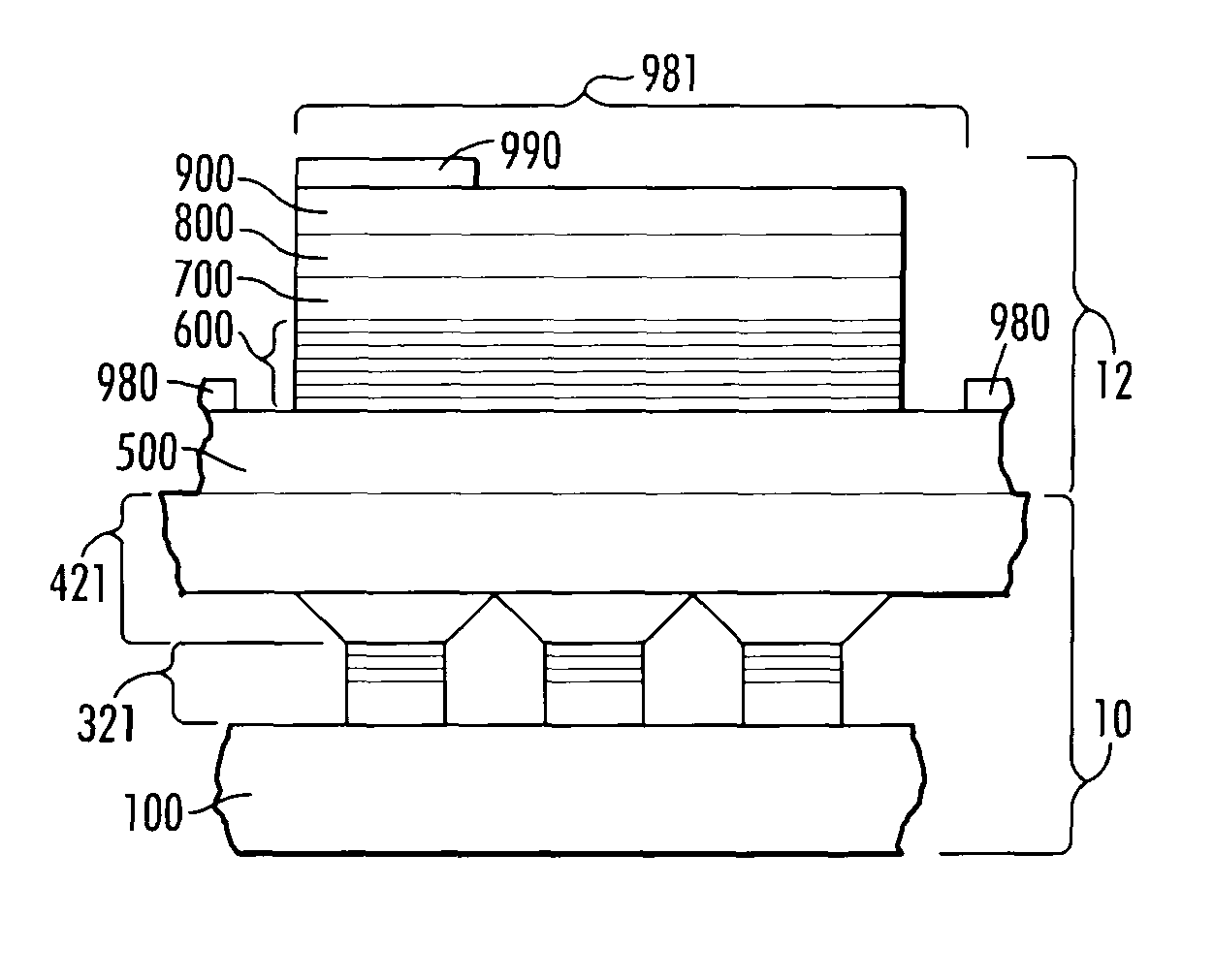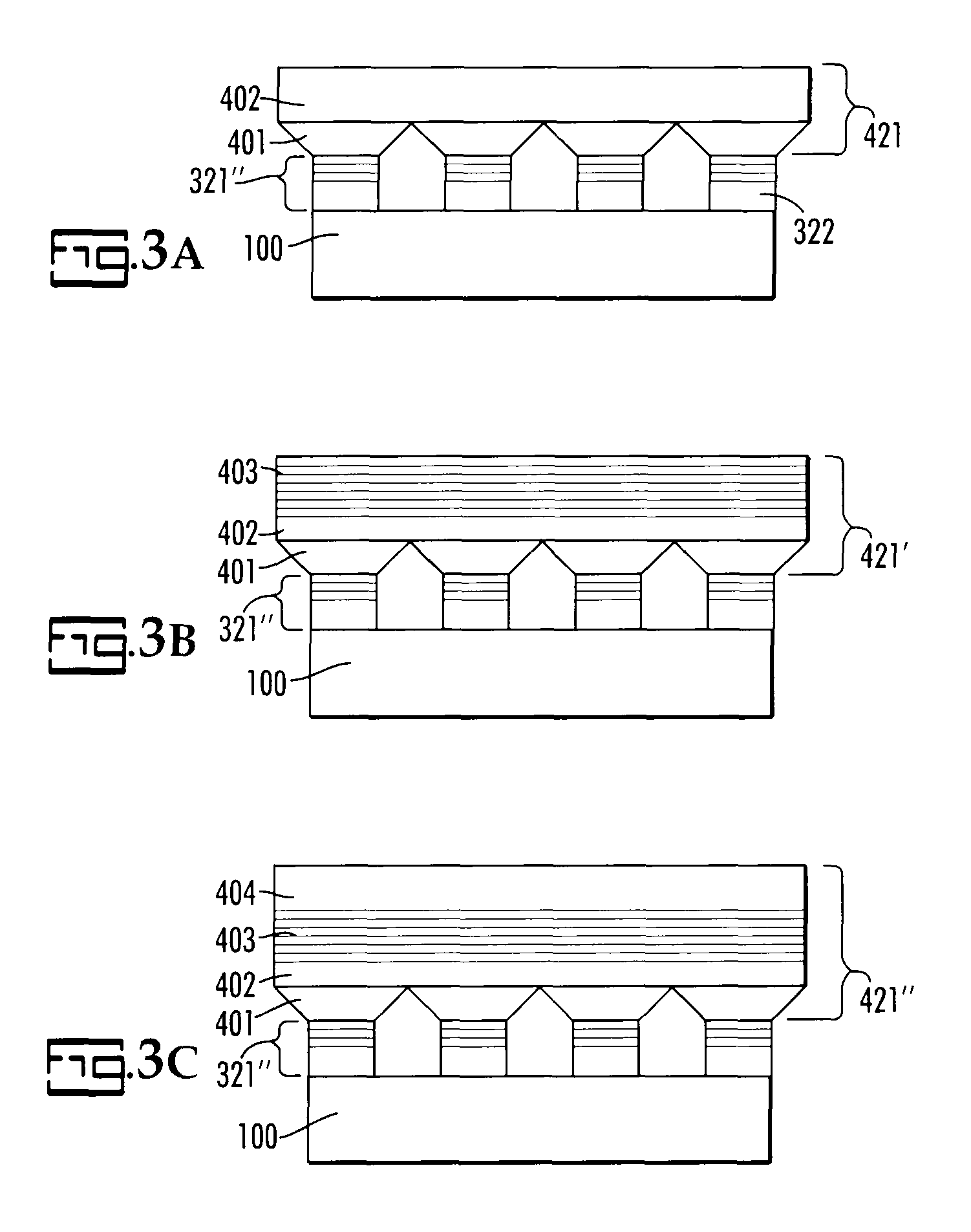Micro-pixel ultraviolet light emitting diode
a technology of ultraviolet light and diodes, which is applied in the manufacture of semiconductor/solid-state devices, semiconductor devices, electrical devices, etc., can solve the problems of high method undesirable, limited array size, and insufficient structure, so as to reduce defects, reduce strain, and relieve strain
- Summary
- Abstract
- Description
- Claims
- Application Information
AI Technical Summary
Benefits of technology
Problems solved by technology
Method used
Image
Examples
Embodiment Construction
[0039]The present invention is an array of light-emitting devices (LED) and a method for making an array of LED's, particularly one that emits deep ultraviolet light. In particular, a template, 10, is provided that serves as a platform for an array of ultraviolet light-emitting structures, 12, as shown in FIG. 4. Briefly, template 10 includes a substrate, and a first buffer layer added onto the substrate as the first step in forming the LED wafer.
[0040]The template may include a substrate but has two buffer layers, one of which is trenched and the second of which preferably forms a coalesced planar layer over the first. The coalescing involves performing PLOG over deep trenches (height 0.4 μm in case of AlN), or over shallow or deep trenches if the pillars encompass more than one group III species or a combination of multiple layers. The pillars may comprise a multi-layer stack of III-Nitride based semiconductors including AlN, and a strain-relieving superlattice in an array. In som...
PUM
 Login to View More
Login to View More Abstract
Description
Claims
Application Information
 Login to View More
Login to View More - R&D
- Intellectual Property
- Life Sciences
- Materials
- Tech Scout
- Unparalleled Data Quality
- Higher Quality Content
- 60% Fewer Hallucinations
Browse by: Latest US Patents, China's latest patents, Technical Efficacy Thesaurus, Application Domain, Technology Topic, Popular Technical Reports.
© 2025 PatSnap. All rights reserved.Legal|Privacy policy|Modern Slavery Act Transparency Statement|Sitemap|About US| Contact US: help@patsnap.com



